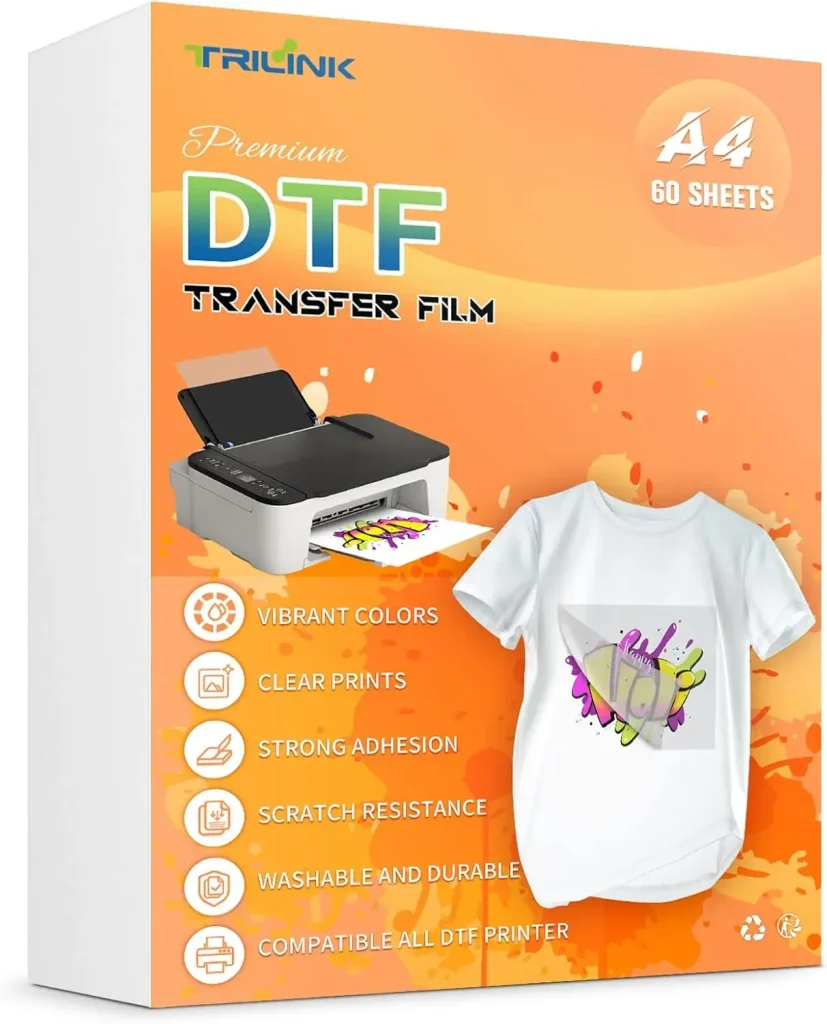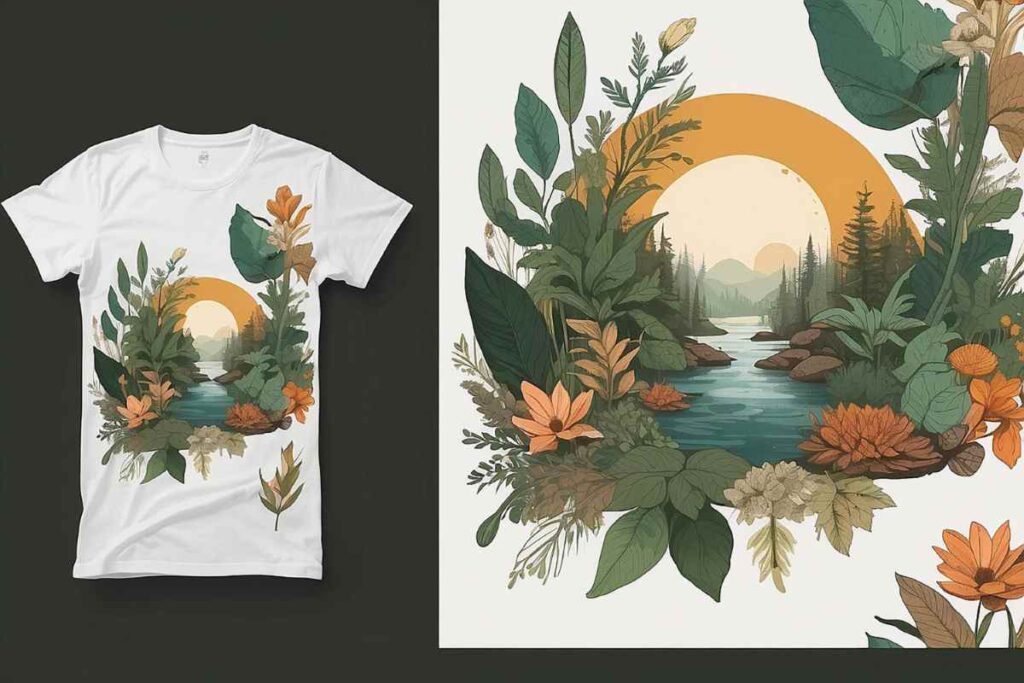DTF transfer paper is revolutionizing the way we create custom fabric prints, offering a seamless solution for artists and businesses alike. With various options available, it’s crucial to know how to choose DTF transfer paper that perfectly aligns with your project needs. This DTF transfer paper guide will help you unlock the secrets to achieving high-quality prints, ensuring your designs adhere beautifully to a range of fabrics. From understanding fabric compatibility with DTF paper to exploring essential DTF printing tips, selecting the best DTF transfer papers can significantly elevate your craft. Dive into this detailed guide to learn how to make informed choices and realize your creative vision.
When it comes to enhancing fabric decorations, understanding direct-to-film print materials is essential for achieving outstanding results. This versatile transfer film technology simplifies the application process, allowing for high-resolution detailing on an array of textiles. By delving into the intricacies of selecting the ideal film for transfers, you can ensure vibrant imagery that lasts. From intimately familiarizing yourself with the properties of transfer sheets to considering the compatibility of this printing method with various textile types, mastering these elements is key. Embrace this comprehensive overview as your roadmap to optimizing your fabric printing endeavors.
Understanding the Basics of DTF Transfer Paper
DTF transfer paper serves as a crucial component in the direct to film printing process, enabling vibrant and detailed designs to be transferred onto various fabrics. Understanding the nature of DTF transfer paper is essential for any printing project. This specialized paper absorbs ink in a unique way that allows it to release perfectly onto textiles when heat is applied. The use of DTF technology negates the need for pretreatment of fabrics, making the printing process more efficient and time-saving.
Moreover, DTF transfer paper typically offers a higher quality print than many other transfer methods, due to its ability to work effectively with a variety of inks. When selecting DTF transfer paper, it is important to research the specifications that align with your intended fabric type and printing requirements. Familiarize yourself with the different kinds of DTF papers available in the market to ensure that your projects meet the desired aesthetic standards.
Crucial Factors in Choosing DTF Transfer Paper
When embarking on your DTF printing journey, several key factors should guide your selection process. The foremost consideration is the type of fabric you’ll be using. DTF transfer paper performs exceptionally well on cotton, polyester, and their blends. Ensuring that the DTF paper you choose is compatible with your fabric choice will greatly enhance the quality and durability of your prints. Always refer to the manufacturer’s guidelines for fabric compatibility.
In addition to fabric type, the weight and thickness of the DTF transfer paper also play a significant role in the final outcome. Typically, heavier papers provide better ink absorption and lead to sharper images. A common weight range for quality DTF transfer papers falls between 100 to 160 grams per square meter (gsm). It’s advisable to select heavier papers as these often yield high-resolution prints, ensuring your custom designs are nothing short of stunning.
The Importance of Paper Quality in DTF Printing
High-quality DTF transfer paper is essential for achieving superior print results. Papers boasting high release quality ensure that inks adhere correctly to the fabric, resulting in vivid colors and long-lasting prints that withstand repeated washing. When seeking the best DTF transfer papers, consider renowned brands that have established credibility in the market, such as Epson, KODAK, and HPN. These brands are synonymous with quality and reliability, offering products that consistently meet user expectations.
Moreover, it’s crucial to scrutinize the specifications of each brand’s DTF transfer paper. Look for those that clearly state their ink compatibility and intended use cases. The right paper can drastically enhance the performance and longevity of your prints, saving you time and resources in the long run. Investing in quality DTF transfer paper will pay off in the professional finish of your custom prints.
Maximizing DTF Transfer Efficiency through Settings
Correctly setting your transfer temperature and time is a vital aspect of the DTF printing process that can greatly affect the outcome. Each DTF paper may have specific heat settings that should be adhered to for optimal results. Ignoring the manufacturer’s guidelines could lead to incomplete transfers or, conversely, damage to the fabric. Therefore, familiarizing yourself with the recommended settings before you begin will ensure that your prints bond securely to the material.
It’s also advisable to conduct a test run with your DTF paper on a scrap piece of fabric before committing to your actual project. This approach allows you to adjust settings accordingly and understand how the paper reacts to heat and pressure. By being meticulous about these settings, you can prevent costly errors and ensure a successful transfer each time.
User Insights: Learning from DTF Transfer Paper Reviews
Before finalizing your choice of DTF transfer paper, taking the time to read user reviews can yield invaluable insights. Various platforms, including YouTube, feature tutorials and feedback from users who have tested different brands and types of DTF papers. These testimonials can offer real-world perspectives on the performance and practicality of the products you are considering.
Additionally, engaging with community forums or specialty groups can provide helpful advice from experienced users. Insights from fellow printers can guide you in selecting DTF transfer papers that align with your specific project goals, adding an extra layer of confidence in your purchasing decisions.
Innovations in DTF Transfer Papers for Eco-Conscious Creators
As the emphasis on sustainability grows within the printing industry, many manufacturers are now offering eco-friendly DTF transfer paper options. These innovative products cater to environmentally conscious creators looking to minimize their carbon footprint without sacrificing quality. By selecting eco-friendly DTF transfer papers, you can ensure that your projects contribute positively to the environment while still producing vibrant and durable prints.
In addition to sustainable materials, advancements in DTF printing technology aim to simplify the overall process by reducing the need for pretreatment. Understanding these recent innovations will allow you to stay ahead in the rapidly evolving world of fabric printing, unlocking new potential in your custom projects while adhering to ecological practices.
Frequently Asked Questions
How do I choose the best DTF transfer paper for my fabric projects?
Choosing the best DTF transfer paper involves assessing the compatibility with your fabric type, such as cotton or polyester. Look for papers with high release quality for vibrant colors, and ensure they are marked for printing orientation. Checking reviews can also provide insights on performance.
What are some essential DTF printing tips to ensure high-quality results?
Key DTF printing tips include verifying the fabric compatibility with DTF transfer paper, using the correct heat settings, and selecting high-quality papers for better ink adhesion. Always refer to the manufacturer’s instructions for the specific DTF paper you choose.
What makes a DTF transfer paper high quality?
High-quality DTF transfer papers typically feature superior weight and thickness, allowing for better ink absorption and detailed prints. Brands like MRT and JetPro are known for their reliable quality and performance in different fabric applications.
Is there a DTF transfer paper guide for beginners?
Yes, a DTF transfer paper guide for beginners should include tips on selecting the right type based on fabric compatibility, understanding printable sides, and following heat settings accurately. Many online resources and tutorials can assist newcomers in mastering DTF printing.
Can DTF transfer paper work on all fabric types?
No, not all fabric types are suitable for DTF transfer paper. It’s essential to choose DTF papers that are specifically designed for compatible materials like cotton, polyester, and blends to achieve optimal printing results without damage.
What recent innovations should I look for when selecting DTF transfer paper?
Recent innovations in DTF transfer paper include eco-friendly options that reduce environmental impact and advancements in ink technology that lower the need for pretreatment. These innovations enhance the efficiency and quality of the DTF printing process.
| Key Considerations | Description |
|---|---|
| Type of Fabric | Verify compatibility with fabrics like cotton, polyester, and blends. |
| Paper Quality | Choose high release quality papers from reliable brands for vibrant, durable prints. |
| Printable Side | Look for papers that clearly indicate the printable side to reduce errors. |
| Weight and Thickness | Heavier papers (100-160 gsm) generally yield better quality and detail. |
| Heat Transfer Settings | Follow manufacturer guidelines for temperature settings to ensure proper adhesion. |
| Cost-Effectiveness | Evaluate cost-per-print ratios to find economical options without sacrificing quality. |
| User Reviews | Research reviews and tutorials to gain insights into paper performance and reliability. |
Summary
DTF Transfer Paper plays a crucial role in determining the success of your custom printing projects. Selecting the right type tailored to your fabric is essential to achieve vibrant prints and long-lasting durability. By prioritizing quality and being aware of emerging trends such as eco-friendly options, you can enhance your printing results significantly. Additionally, always consider user feedback and brand reputation when making your decision. Emphasizing these aspects ensures that your print jobs look professional and withstand the test of time.


